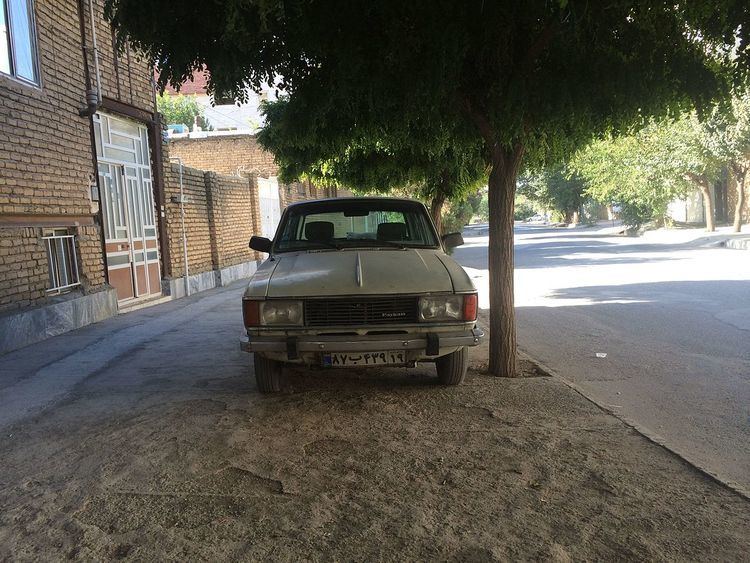Body style Sedan or Pickup Transmission Manual transmission | Production 1967-2005 Engine 1.6 L | |
 | ||
Layout Front-engine, rear-wheel-drive layout، Rear wheel drive | ||
The Paykan (Persian: پيکان Arrow) was an automobile produced by the Iranian company Iran Khodro (formerly called "Iran National") Industrial Group. The car was very popular in Iran from the late 1960s to the late '90s. It is often referred as the Iranian "chariot".
Contents
The Paykan was a Rootes Arrow built under license, but had some unique body work and locally-developed variants (most notably, the pickup, which used a different body shell than the one sold elsewhere).
History
The design was introduced to Iran by Mahmoud Khayami, co-founder and, by then, owner of the Iran Khodro (formerly called "Iran National") company and factory, who accurately predicted that Iran was in need of a simple "no-frills" automobile within the price range of ordinary people.
In 1967, Rootes began exporting Hillman Hunters to Iran Khodro in "complete knock down" (CKD) kit form, for assembly in Iran. By the mid-1970s, full-scale manufacture of the car, less the engine, had started in Iran.
In 1977 Roy Axe designed a new Paykan facelift model using many interior and exterior parts from the Chrysler Alpine.
In 1978, Peugeot took over the Rootes company after it collapsed under the ownership of Chrysler Europe; a year later Peugeot ended Hunter production in Ireland. Thereafter, the Paykan's engine production tooling was moved to Iran and was in full-scale manufacture under Peugeot license until 2005 when the last Paykan saloon rolled down the assembly line.
Design
Although the Paykan was based on an old 1966 model, there were many changes and modifications made to it over the years, notably the substitution of the original 1725 cc Rootes engine by a Peugeot 504-derived unit. The modifications to the exterior included a new stock body kit and head and tail lights. A Paykan Pick-up was also offered. There was another "pickup" based on the Rootes Arrow sold in South Africa, the Dodge Husky, but the two models used different body shells. The South African version has a thicker B-pillar and retains the sedan's character lines along the side panels. The rear gate and rear window are also subtly different.
The Iranian government reportedly offered Iran Khodro a large cash incentive to end Paykan production by 2005, labeling the car as an environmental hazard because of its unacceptably high fuel consumption. During its last years, the order backlog was nearly two years long.
The Samand, commonly referred to as the "New Paykan", is currently being produced by Iran Khodro as a modern substitute for the Paykan class of cars. In 2005, Iran Khodro announced that it had sold the discontinued Paykan's automobile production line to the Khartoum Transportation Company in Sudan, while auto-parts production for the Paykan still continues by third party manufacturers in Iran.
